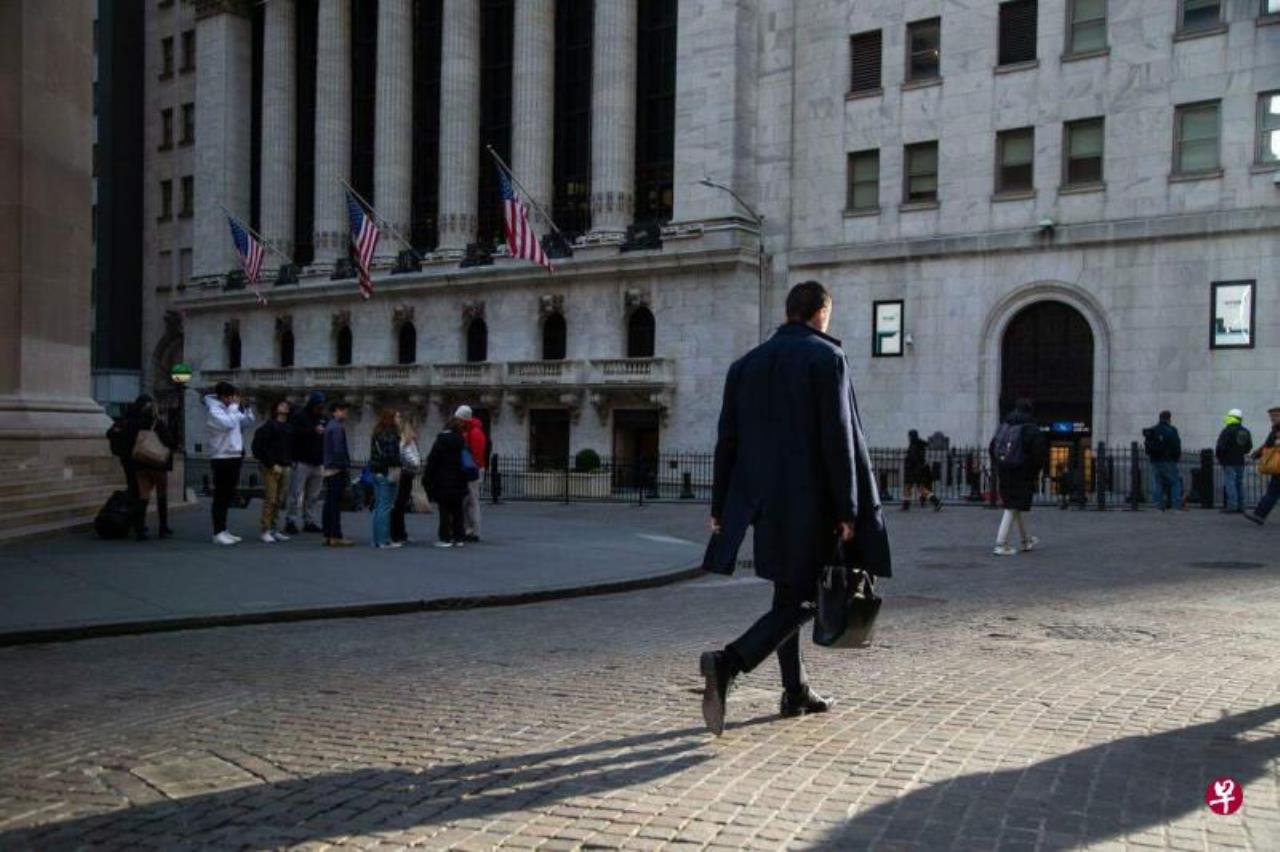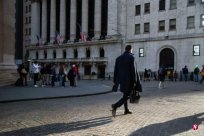
As early as January 13, last year, I was published in the Lianhe Zaobao · speech entitled In an article in the US inflation that triggers the global economic crisis , I warned: "Now, the United States has once again fallen into severe inflation. In order to cope with the rise in prices, the American people will have to take the currency in their hands., Re -transferred to the low -level production fields such as consumer goods, which is undoubtedly a challenge for the future US capital market, and it will also be a huge challenge to the US economy. It is also based on the objective facts of the central bank of the world.Its every move will have a huge impact on the global economy. So the question comes: the inflation of the United States is coming, will the global economic crisis be far away? "
After that, on June 3 last year, I was published in the column of the Securities Times of the China People's Daily. After publishing an article entitled by a tightening, whether the US economy will repeat the wrong articles in 1937, Once again, the above view is reiterated.In the article, I mentioned that Christina Romer, the chief economist of the Obama administration and the current chairman of the American Economic Society, published an article entitled by a small little little bit in 1991?The end of the dissertation believes that the end of the Great Depression should be mainly due to the loose monetary policy at that time -from 1933 to 1941, US currency circulation has increased. Although the nominal interest rate has been zero, the actual interest rate has been from the early 1930s.It was 15 percentage points and 10 percentage points fell to the negative, which showed that the inflation rate was very high at that time.Therefore, in Rom's view, loose monetary policy is the only reason for the end of the Great Depression.
Of course, the premise is that the monetary policy must be in a state of extremely loose and high inflation rate for a long time.Otherwise, as long as the monetary policy is tightened, the economy will turn off immediately.In this regard, Rom himself has an unusually clear understanding.In 2009, she published an article from 1937 lessons (The Lessons of 1937). The article wrote: In 1933, Franklin Roosevelt was in power. Four years later, the economic recovery was incredible.The actual growth of GDP (GDP) averaged more than 9%year, and the unemployment rate also dropped from 25%of the Huroda era to 14%in 1936.Aside from World War II, this is the fastest and lasting growth period in the history of the United States.
But from 1937 to 1938, the second severe economic recession hindered economic growth.At that time, the unemployment rate soared to 19%.The main reason for this recession was that the Roosevelt government at that time adopted a tightening fiscal and monetary policy to avoid inflation.Rom said, "This is obviously an unfortunate and reckless decision."Monk policy makers are worried that if inflation occurs, or unusual speculative reversal in Wall Street, excessive reserves will cause difficulties in the implementation of tight monetary policy.To this end, she believes that currency tightening is the main reason why the United States recession again from 1937 to 1938.
I wrote in the column: "For this reason, we have reason to believe that after the outbreak of the financial crisis in 2008, the United States has implemented quantitative easing (QE) several times, and the currency loose state is maintained for a long time.There is a big relationship. But as Roms herself is worried, her policy suggestions must only be built in a state that is not stopped in 'water', otherwise it will inevitably repeat the mistakes in 1937. "
Unfortunately, a word of words.First, the Silicon Valley Bank of the United States closed down, and then marked the banks, the first Communist and the Bank, and Wells Fargo, and the banks also showed abnormal signs; then, the Trustworthy Swiss Credit was in trouble.Shan Yu wants to come to the wind, and it has caused huge panic in the market for a while.The question comes, from the Federal Reserve's interest rate hikes to the economic crisis, how long is this in the middle?Our above the global economic cycle is an example to illustrate.
Affected by the crushing of the Internet bubble, the US economy began to decline in 2000.As a response, Greenspan's dominant Fed began to cut interest rates sharply until the lowest point in the history at that time -1%."Benefit" in sufficient liquidity. By 2004, the US real estate market was unprecedentedly prosperous. Real estate promoted the rapid growth of 3%to 4.5%in real estate, and the unemployment rate dropped to less than 6%.The market of loans and subprime derivatives has expanded sharply, and the core consumer price index (CPI) climbed to 2.6%.In order to control inflation and overheating real estate markets, from June 2004, the Federal Reserve has entered the interest rate hike period again.This round of interest rate hikes has raised interest rates 17 times and 24 months, and a total of 425 basis points were raised.
Looking back on this history, it is not difficult to find that the interest rate hikes caused by inflation in the United States have indeed brought about the economic crisis mentioned by Rom. This crisis is the financial tsunami in 2008.We also found that at the beginning of interest rate hikes, the United States and the global economy did not have begun significantly.In March 2004, the economic growth rate in the first quarter of the United States was 4.35%, and the growth rate in the second quarter, including interest rate hikes, was 4.23%.By the third quarter, the US economy began to decline, but it still recorded a growth rate of 3.49%, with 3.36%in the fourth quarter.By 2005, the growth rate in the first three quarters not only did not decrease, but rose slightly.The specific data are: 3.91%, 3.61%, and 3.45%.It did not fall below 3%in the fourth quarter of 2005 to 2.98%.In 2006, the value further decreased, respectively: 3.22%, 2.98%, 2.33%, and 2.61%.By 2007, the US economy began to show obvious decline.The growth rates of the four quarters of the year were: 1.54%, 1.94%, 2.40%, and 2.16%.
In 2008, this slump performed more obvious. The growth rate in the first quarter of 2008 was 1.45%, and the second quarter was 1.38%.It has been negative, and the specific value is -2.54%.
How long is the stagnation between this time from the tightening of currency to the economic crisis?In the book of American currency history, Milton Friedman, the Nobel Prize winner of Economics, proved a lot of data that the conduction time from the US currency expansion (specifically M1) to inflation is 18 months.about.As for the currency caused by interest rate hikes to the economic recession, there may also be such a conductive period. According to the performance of the previous round of economic cycle, this conduction period may also be about 18 months.If this law stands, this round of interest rate hikes will lead to signs of the global economy that truly shows crisis, and it may be in the fourth quarter of this year or the first quarter of next year.
Of course, it is necessary to point out that I don't agree with Rom's suggestion.It is very simple. It can avoid the crisis of 1937, but isn't it afraid that the mistakes of Germany and Argentina in the 1970s in the 1920s?More importantly, decline is often demonized by people.But the fact is that the decline order a large amount of debt can be cleared, allowing zombie companies to go bankrupt, so that resources can be optimized and the creative devastating mechanism (innovation) can be activated.
The most classic case comes from the United States from 1979 to 1984. Under the tightening policy of the then Fed Chairman Paul Adolph Volcker (JR), the United States has deeply trapped for four years, but in exchangeIt is a transformation of the US economic structure.It not only reversed the fate of the United States being swallowed by stagnation, dragged the United States from the abyss of the failure of the country in the 1970s.The 30 -year prosperity has laid a solid foundation.To this end, Grimpan also had to acknowledge such a fact, that Walker was "the father of American economic vitality in the past 20 years."


